Our Latest Blogs
Our Solutions News Blog was envisioned to gather and share information from the very best to help you and your business to become more effective.
Our Solutions News Blog was envisioned to gather and share information from the very best to help you and your business to become more effective.
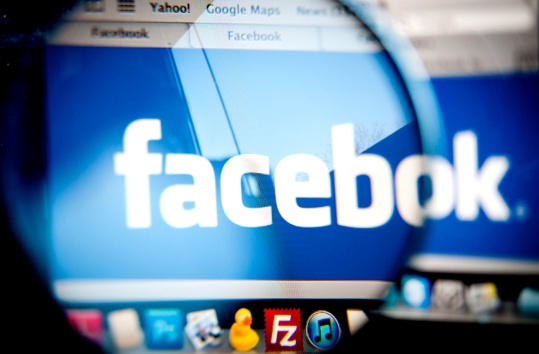
Facebook just announced yet another way it is encroaching on your privacy. Starting soon, the company said on Thursday, it will use information gathered from other websites to figure out the ads that best apply to you.
But, to its credit, Facebook is also offering a way to opt out of its new data-gathering system. Here's how to do so in just two steps.
Step 1:
Go to this page from the Digital Advertising Alliance, a consortium of advertising trade groups. There you'll find a list of all the companies that track your browsing to deliver tailored ads. Mostly likely, Facebook is among them.
Find "Facebook Inc." under "Companies Customizing Ads For Your Browser" and check off the checkmark to the right.
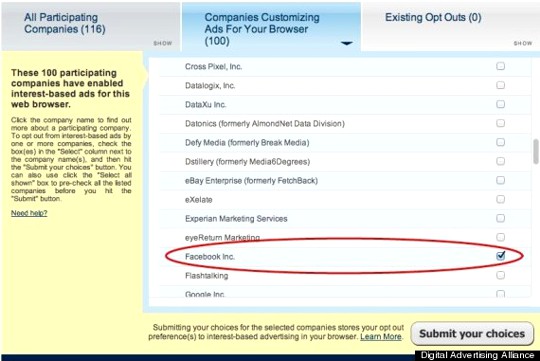
Then just hit "Submit."
One important note: Disabling Facebook from tracking on one web browser does not disable it on all browsers. You'll have to go through this step on all browsers you use to check your Facebook account, even those on the same computer.
Step 2:
Unless you have an ad blocker, you'll never get Facebook to completely stop using all of the knowledge it has compiled on you. But you can pick and choose some of the things that get thrown into the pile. Over the next several weeks, Facebook will roll out a new tool in the U.S. that will let you add or subtract interests, like "Television" or "Electronics," that Facebook has attributed to you.
When this feature is made available, you'll be able to access it by clicking or tapping the gray arrow in the top-right corner of the ad and then going to "Why am I seeing this?" From there, you'll be able to edit your list of interests.
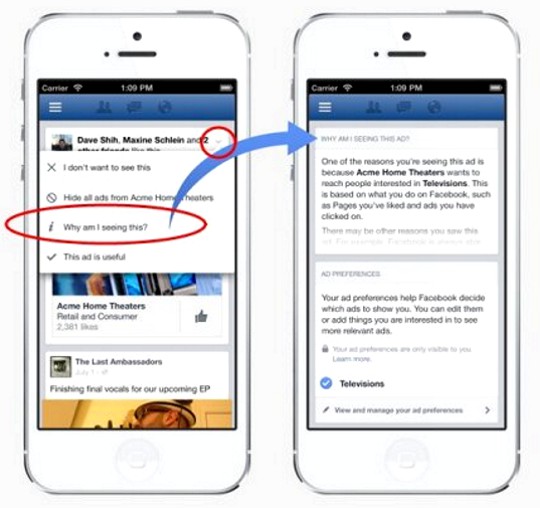
Again: This second step will not be available for a few more weeks. And if none of this is good enough, there's always the nuclear option of (gulp) deleting your Facebook.
Source: Huff Post
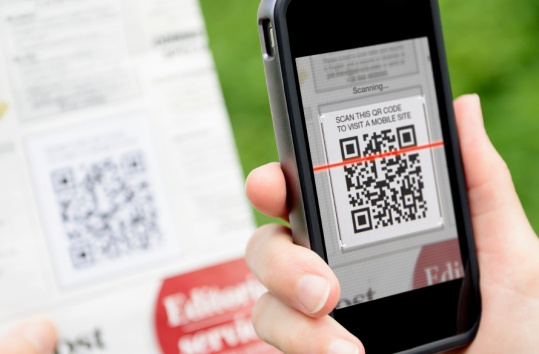
Sometimes, when I think back to internet trends that came and went, it can put a big smile across my face. Remember the hours you or your friends spent playing Farmville and typing all Facebook statuses in the third person? Sweet memories, right?
But then there are the trends that have kind of faded into the background, only to pop up in your thoughts when you're in the shower or in the middle of devising a new marketing campaign. You think, "Does anyone actually do that anymore?" Googling it doesn't really help -- all the articles are from five years ago, and they all seem to think that trend is all the rage. There's nothing explicitly telling you that this trend is really not that cool anymore.
Well, we figured we'd help you set the record straight. Let's take a moment to look back at six internet marketing trends of the last five years that are really not a thing anymore, and give you alternatives to take advantage of now.
1) #FollowFriday
Follow Friday was very, very popular on Twitter back in 2009. Here's how it worked: Every Friday, you'd send a tweet to your followers recommending a Twitter handle you thought was super interesting and others might want to follow. You'd accompany these tweets with the hashtags #FollowFriday or #ff.
Here's what a #FollowFriday tweet was supposed to look like:

It's descriptive, helpful, and personalized. But here's what #FollowFriday tweets actually ended up looking like -- ALL OF THEM:

You can imagine how cluttered your news feed looked when everyone you followed was posting tweets like that at the same time. (Oatmeal said it best.)
Follow Friday started with a single tweet by entrepreneur Micah Baldwin.
One of his followers responded by suggesting the #followfriday hashtag. A few more friends hopped on board, and boom: At the peak of the first ever Follow Friday, the #FollowFriday hashtag saw two tweets per second.
Why did it catch on so fast? Because it was easy, people felt like they were spreading goodwill, and anyone with a free Twitter account could participate. There were great intentions behind its creation and adoption in 2009. If you think someone's tweets are great, why not share that greatness with your followers? But when Twitter feeds became incomprehensible streams of hashtags and Twitter handle recommendations, Follow Friday got old reeeal quick.
It's not clear when Follow Friday started dying, but it's gone.
2) Like-Gating
Have you ever been offered something for free from a brand in exchange for "Liking" their Facebook page? That's called Like-gating, a trend that got really hot in 2011. Here's an example of Like-gating from Sephora:

If you've ever Liked a company's Facebook page so you could get free stuff, think back to how that exchange made you feel about the brand. Did their offer make you feel more loyal to them, or did you suspect they'd spam you in the future?
Most of you would probably say the latter. Offering free stuff for Liking your page is a plea for quantity, not quality, of Facebook Likes. But don't you want the people who Like you on Facebook to have done so without dangling a carrot on a stick? Plus, consumers have been able to "unlike" a company page with the click of a button since 2010.
If your goal is to gain a lot Facebook Likes in a short amount of time, like-gating can be a tempting short-term solution. But ask yourself the business value of all those low-quality Facebook Likes. Is it worth the investment?
For Like-gating to be effective at all, the real work would need to start after a consumer Likes your page. You'd need to convince them to stick around by being helpful, valuable, and providing great content. If you really want more Facebook fans, then you need to make sure you follow up and continue building a strong relationship with consumers long after the Like.
But it's far better in the long term to earn those Facebook likes by providing helpful, engaging content from your website. Before people Like your page, they've probably given it a once-over to see if anything there would interest them. So when people end up Liking your page by choice, they're more likely to want to engage with your website content -- which is your ultimate goal, anyway.
3) LinkedIn Events
The idea behind the LinkedIn Events application, which was shut down in 2012, makes total sense: Professionals want to know where other professionals are networking and what conferences they're going to. Plus, you wouldn't want professional events muddled in with your best friend's housewarming party on Facebook Events -- and at that point, how many of you were connected on Facebook with all of your professional mentors and influencers, anyway?
LinkedIn's Events application let users browse events the people in their networks were organizing or attending. You could see the attendee lists, mark down whether you were attending yourself, and even see a list of "attendees you may want to meet" based on connections, interests, and industry. Here's what it looked like:
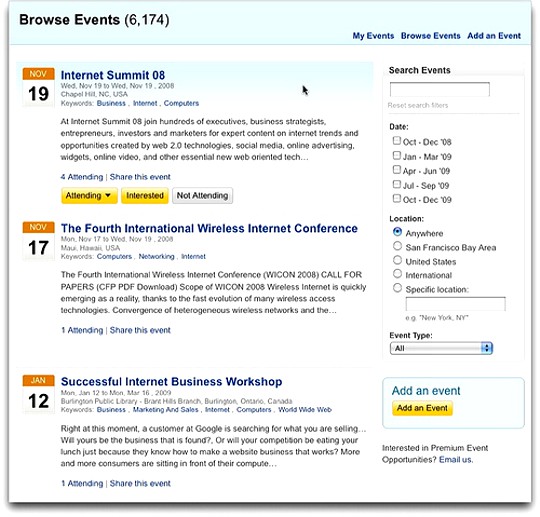
When LinkedIn announced they would be shutting down the application, my first reaction was, "LinkedIn had an events application?" Apparently I wasn't alone. LinkedIn's official message said they shut it down because they wanted to invest more time and money in building out other parts of the product. It's unclear whether this meant that too many LinkedIn users didn't use the Events application, or it just didn't support LinkedIn's overall strategy.
Either way, if you're feeling lost without it, try finding and promoting events on Facebook, Eventbrite, or on MeetUp.com. (The first is much more acceptable than it used to be.)
4) QR Codes
Remember when it seemed like QR Codes were everywhere? They were on store windows, napkin holders, walls, in magazines. In short, QR Codes (Quick Response codes) are matrix barcodes that can be read by QR barcode readers, which people could choose to install on their smartphones. Marketers thought of them as a way to bridge offline and online marketing -- kind of like links you could "click on" in real life.
But there was just one problem: The trend never really broke out of the tech-savvy crowd. Although both Apple and Android have QR readers built in to their systems (Apple's is built into Passbook, not the camera itself), that isn't very widely known.
If you're looking for a way to connect the physical and digital world, it's simple: Place URLs in places you want consumers to see them. They can type them in manually. Just make sure the URL is logical to type -- not a random jumble of letters.
5) EdgeRank
Facebook's News Feed algorithm has kept marketers on their toes by evolving numerous times since it launched in September 2006. In 2006, users first saw personalized lists of their friends' posts that updated throughout the day. To figure out what content users wanted to see on their news feeds, Facebook used a pretty unsophisticated algorithm: the pre-cursor to EdgeRank.
In 2007, at the same time Facebook launched Ads and Pages for companies to use, they released a new News Feed algorithm, named "EdgeRank," that determined exactly which Facebook posts would go into other people's News Feeds. For companies, EdgeRank provided statistics of the engagement on your company page so you could analyze your activities.
But the EdgeRank algorithm couldn't keep up with the rapidly increasing number of people using Facebook, now more than a billion people per month, accessing Facebook on all different devices. In August 2013, Facebook announced changes to the algorithm that could accommodate its huge user base.
Since then, the name EdgeRank has been declared dead, but Facebook's algorithm has continued to evolve and improve. The new algorithm has almost 100,000 weight factors to determine which of your friends' posts you see on your feed. With all of these changes that've cropped up, your survival strategy should be simple: continue creating content your fans, leads, and customers enjoy.
6) Facebook Polls
In June 2013, Facebook announced a plan to streamline the number of ad units by cutting out redundancies they found in their advertising platform. This would include the Questions product for Pages (sometimes referred to as "Facebook Polls"), which many marketers used to engage fans in a way other than just posting to their page's wall.
But it turns out that Facebook Questions, originally predicted to be a big threat to Quora, actually never really caught on. Facebook even repackaged and relaunched a more social, watered-down version of the product in 2011 that allowed you to only poll people you were directly connected to on Facebook, rather than the whole Facebook community.
Questions was quietly shut down in July 2013 under the premise that marketers could get the same information from fans by simply asking a question in new post and looking at the comments. LinkedIn also used to have a Group Polling feature, but they too shut it down in May 2014.
At this point, if you want to poll your audience on social media, you'll have to stick with asking questions in regular posts and looking at answers in the comments. And even that tactic is kind of outdated -- Facebook's made some algorithm changes to cut down on "engagementbait" in the News Feed, and that tactic could end up easily falling into that category. So you should probably steer clear of Facebook polling altogether, unless you're posting a link to a survey or poll you're running on your website.
Do you or did you follow any of these trends? What did you find good and bad about them? Post a comment.
Source: Hubspot / Written By: Lisa Toner
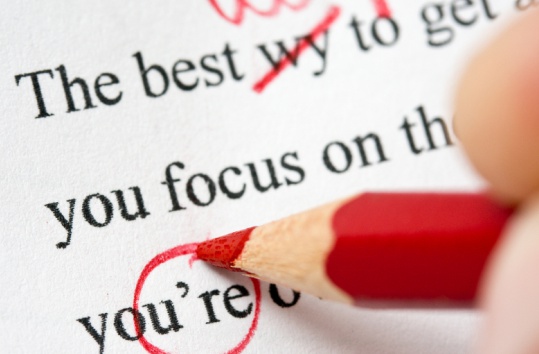
I remember the first time I had to proofread something. It was my third day on the job at my very first internship -- a small marketing agency in central New Jersey. My boss called me over and handed me a 36-page newsletter that needed to be proofed quickly. We had to send it back to the client ASAP.
I was decent at writing and editing, but I didn't want to disappoint my boss and our clients by letting mistakes slip through the cracks ... if only I could have someone proofread my proofreading to make sure I wasn't screwing up. But I don't know a business that has time for processes like that. So I just tried to be extra cautious (even though that still didn't ensure everything was perfect).
Thinking back, I would have loved to have a proofreading checklist. Since I know I'm not the only wannabe perfectionist out there, I decided to create the post below to help anyone in a similar scenario.
Note: We're talking about proofreading here -- not the first draft editing process. When you're editing, there are lots of other things you should look out for.
1) Tone
Having the right tone for corporate copy is tricky -- you've got to be aligned with the overall brand tone, but if it's a social message or a blog post, you might also have the author's own distinct voice to consider. Make sure you're keeping an eye out for both.
For example, your brand may have a super friendly and encouraging tone ... but you see that a writer's been infusing one too many harsh, snarky comments in their piece. Make sure you're course-correcting on those elements so that the piece doesn't seem out of place among the other posts on your blog.
When you're proofing, most of this tone issues should already have been worked out in previous editing rounds. Still, it's possible that a few parts may stick out like a sore thumb -- it's your job to notice and fix them.
2) Product and Persona Positioning
This is also something that should be dealt with before the final editing stage, but often positioning elements can slip through the cracks because they're pretty nuanced. Sometimes fixing positioning comes down to choosing another synonym or adding a simple descriptor to a sentence.
There are two positioning elements you generally need to fix: product and persona. Product positioning mistakes will usually be mistakes that misrepresent what your company offers. It'd be like calling Chipotle fast food ... yes, it's true it's a fast-food joint, but it's not on par with the McDonald's of the world since it uses high-quality, freshly made food. That's a core part of their brand positioning that should be addressed in your copy.
Persona positioning is another mistake people often make -- particularly if your company sells to several different buyer personas. Persona positioning mistakes usually crop up when incorrect language is used for a persona. For example, let's say you work for Dell, selling to both the average consumer and an IT department. If the blog post for the consumer used technical terms only the IT department persona would get, you'd need to revise those terms. Even if your company has tight buyer persona alignment, it's possible that little tidbits meant for one persona slip into a post for another.
3) Logical Flow
A lot of marketers throw around the whole storytelling aspect of content marketing -- that's not what I'm talking about here. What I'm talking about is making sure that each sentence is followed by one that makes sense. Flow. A logical one. (This also holds true for paragraphs, too.)
Poor transitions often happen when a writer doesn't have an outline -- creating an outline from their writing can help you figure out where you need to beef up transitions between sentences or paragraphs. If you find there's an illogical leap from one sentence or paragraph to another, that's when you know you need to make edits to those transitions.
4) Grammar
Even the best writers can have grammar mistakes slip through if they're on tight deadlines. They know that they need to use "their" instead of "they're" but somehow it slipped into the post.
As the proofreader, you need to be hyper-vigilant about detecting grammar mistakes. If this isn't your sweet spot in the writing/editing world, take a look at this post and this post on the most common mistakes people make. Before you hit "publish," find those words in the piece (Control + F on PC or Command + F on Mac) and make sure they're being used correctly.
5) Style Guide Consistency
Abiding by your company's style guide may seem like a small thing, but not following it makes a piece of copy seem out of place among the rest of your work. For example, in the HubSpot style guide, we always capitalize prepositions in headlines that are four letters or more -- so words like "with" and "from" should be capitalized in titles. If we forget to follow this rule, it's not the end of the world ... but it does look sloppier on the homepage or in one of the section pages of Inbound Hub.
If you know that you have a tendency to forget to check certain important parts of the style guide, try to find and replace them as you would with grammatical mistakes.
6) Country-Specific Spelling and Jargon
Pretty much everyone who publishes online content should be concerned with this bullet point. Though international or global companies worry about this more often, the truth is that anyone from anywhere in the world can find and read your content. Don't you want to make sure they understand it?
You shouldn't eliminate country specific spelling and jargon -- especially if your main audience is local -- but just make sure that it'll make sense to someone in your industry from another country. If you're marketing to anyone in the world, the last thing you want is for them to click off your blog because they didn't fully understand the country-specific references.
7) Logical Images
Often, people will notice images more than the text in your content -- especially if they're just speed reading and scrolling through it. So make sure your images always make contextual sense.
Ask yourself: Does the image make sense on its own, or does it require an explanation? If it needs one, you probably need to swap it out for something else. Images are supposed to hit home the points you make in the copy, not make the reader ask more questions.
8) Data and Image Attributions
Frankly, it's pretty easy to steal content on the web, even if you're not trying to. After you've tidied up the copy and made sure you've got supporting imagery, make sure you've properly cited any external data and images. If you're unsure of what data and images you can use, check out this blog post. The last thing you want is to get served papers over using an image you thought was up for grabs online.
9) Spellcheck
When you were proofing for grammar, you should have also found some typos, but it's very possible that you may have missed them. Use a built-in spell-checker or copy-paste your near-final copy into Word to see if you get any red or green squiggly lines. You'd be surprised how easy it is, even for a trained proofreader, to miss a tiny typo in the midst of a long paragraph. This step helps cut down on any human error that may have occurred somewhere in the writing or editing process.
10) Broken Links
Last but certainly not least, you should check to make sure alllll the links are directed to where they're supposed to be and that they actually work. Once you have the content all set in your CMS, just go through and open up every link. The one time I forgot to do this for a blog post, I ended up mis-linking something, directing our lovely readers to a BuzzFeed article instead of a helpful ebook. Though I'm sure you all enjoy seeing cute kittens, you'd rather find what you actually wanted to click on, right? Don't make your readers hunt for content they thought was coming their way.
If you're always fixing these 10 mistakes, you'll end up with quite a tidy piece of content -- if not perfect. It's possible that one tiny mistake may still slip through -- you're human, after all. But this list should help you keep your content squeaky clean, all without hiring a proofreading checker.
Source: Hubspot / Written By: Ginny Soskey
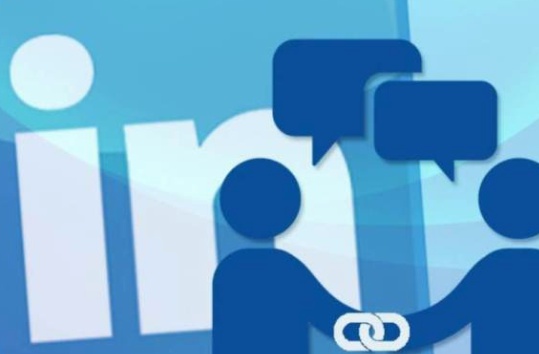
With more than 259 million users, LinkedIn is the most popular social network for professionals as well as one of the top social networks overall. Are you using it to its fullest potential?
While new social networks are sprouting up constantly, LinkedIn is a powerful platform that often gets underutilized or put on the back burner.
But the truth is, LinkedIn can be extremely powerful -- especially when you're aware of all the little hidden tricks that don't get nearly enough exposure as they deserve. To help you master LinkedIn, below is our ultimate list of 35 awesome tricks you may have been overlooking.
Optimizing Your LinkedIn Presence
1) Customize your public profile URL.
Make your profile look more professional (and easier to share) by claiming your LinkedIn vanity URL. Instead of a URL with a million confusing numbers at the end, it will look nice and clean. Customize your URL by going here and clicking Customize your public profile URL down on the right-hand side.
2) Create a profile badge for your personal website.
If you have your own personal website or blog, you can promote your personal LinkedIn presence and help grow your professional network by adding a Profile Badge that links to your public LinkedIn profile. LinkedIn has a few different badge designs to select from, and you can configure your own here.
3) Make your blog/website links sexier.
Instead of using the default "Personal Website"-type anchor text links in your LinkedIn profile, you can change the anchor text to make those links more appealing to people who view your profile. So if you want to increase clicks on the website links you display on your profile, change those links' anchor text to something more attention-grabbing than the standard options LinkedIn provides.
For example, if you want to include a link to your blog, rather than choosing LinkedIn's standard "Blog" anchor text, customize it to include keywords that indicate what your blog is about. Each profile can display up to three website links like this, and they can be customized by editing your profile, clicking the pencil icon next to your website links, and selecting Other in the drop-down menu.
4) Search engine optimize your profile.
You can also optimize your profile to get found by people searching LinkedIn for key terms you want to get found by. Add these keywords to various sections of your profile such as your headline or in your summary.
5) Show work samples.
Did you know LinkedIn allows you to add a variety of media such as videos, images, documents, links, and presentations to the Summary, Education, and Experience sections of your LinkedIn profile? This enables you to showcase different projects, provide samples of your work, and better optimize your LinkedIn profile. Learn more about adding, removing, and rearranging work samples here.
6) Add, remove, and rearrange entire sections of your profile.
LinkedIn also enables users to reorder the sections of your profile in any way you prefer. When in edit mode, simply hover your mouse over the double-sided arrow next to the Edit link for each section. Your mouse will turn into a four-arrowed icon, at which point you can click, then drag and drop to another position on your profile.
You can also customize your profile with sections that apply only to you. Find a full list of sections to add to and remove from your profile here.
7) Take advantage of Saved Searches.
LinkedIn allows users to save up to ten job searches and three people searches. After conducting a search, clicking the Save This Search option on the right allows you to save a search and easily run it again later. You can also choose to receive weekly or monthly reminders (+ daily for job searches) via email once new members in the network or jobs match your saved search criteria.
8) Quickly turn your LinkedIn profile into a resume.
Job seeking is one of the most common -- and beneficial -- uses of LinkedIn. Were you aware that LinkedIn enables you to turn your profile into a resume-friendly format in seconds with its Resume Builder tool? Just choose a resume template, edit it, and export it as a PDF that you can print, email, and share.
9) Find a job through LinkedIn's job board.
Now that you've generated that awesome new resume from LinkedIn's Resume Builder tool, you can use it -- and LinkedIn's Job board -- to help you land an awesome new position. LinkedIn allows you to search for jobs by industry and location. It even suggests jobs you might be interested in based on the information in your LinkedIn profile. Save some job searches like we suggested in number 7 to get alerted when new jobs pop up, too!
10) Get endorsed.
Back in 2012, LinkedIn launched a feature called Endorsements, which enables users to endorse their connections for skills they’ve listed in the Skill & Expertise section of their profile -- or recommend one they haven’t yet listed. These endorsements then show up on your profile within that same Skills & Expertise section, as you can see in the screenshot below.
Okay, so you can't guarantee your connections will endorse you for those skills, but because it's so easy for your LinkedIn contacts to do (all they have to do is click on the + sign next to a particular skill on your profile), you'll find that many of them will do it anyway. Just make sure your profile is complete and you've listed the skills you want your contacts to endorse you for. It will definitely give your profile a bit of a credibility boost. You can also remove endorsements if you find people are endorsing you for skills that aren't very applicable.
Source: Hubspot / Written By: Pamela Vaughan
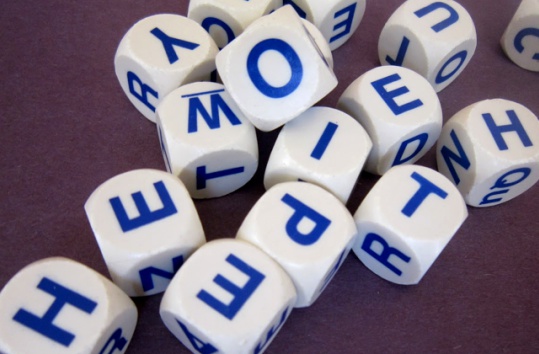
Okay, so I'm no English major, but I am a content marketer -- attention to grammatical detail is something very near and dear to my heart.
The more time I've spent in this role, the more I notice little errors in things like text messages, IMs, and birthday cards. This could either be seen as a good thing ... or incredibly stressful to anyone who has to communicate with me non-verbally. (Sorry guys. I can't help it!)
I've become the go-to person for proofreading other people's content before it goes live, and as a result, I have started to notice a few of the same mistakes cropping up time and time again. So, I decided to write this post with the hope of calling attention to those common errors.
Note: I know, I know, not all of these are "grammar" mistakes. But I'm taking a pretty liberal definition of "grammar" in this post -- including spelling, usage, punctuation, and the like.
1) The Apostrophe Catastrophe
The two most common misuses of the apostrophe are:
Contractions
The apostrophe is often used as a contraction. For example, "I can't figure this out." The apostrophe here is used to omit the word "not" so that "cannot" becomes "can't." The same can be used for "don't" (do not), "they're" (they are), etc.
Possessives
The second most common use of the apostrophe is to indicate possession. For example, "That is John's car." The car belongs to John. Without using the apostrophe in this case, you are pluralizing John, meaning there's more than one John in your sentence. And then the sentence just doesn't make sense anyway.
A common point of confusion for both of these apostrophe use cases is the word "it's." The possessive form of "it" can cause all kinds of confusion, as it doesn't conform to the above rule.
For example, "The elephant is known for its memory" is a correct use of the word "its" -- even though one might think there should be an apostrophe after the "t" since the elephant "possesses" the memory. A simple way to remember the right one to use is to ask if the word can be separated into two words -- "it is" or "it has." If it can, use an apostrophe.
2) That Tricky Little Comma
There are many uses of the comma, but for simplicity, I'm only going to cover the most frequent errors I spot.
To Separate Elements in a Series
I went to the shop to buy apples carrots bread and milk.
That sounds insane, right? That's because each element in the series should be separated by a comma.
I went to the shop to buy apples, carrots, bread, and milk.
Ahhh, much better. That last comma, by the way, is optional. It's called an "Oxford comma," but whether you use it depends on your own internal style guide.
To Separate Independent Clauses
An independent clause is a sentence that can stand on its own, so when in doubt whether a comma needs to be in the sentence, take the second part of the sentence and ask yourself if it would make a full sentence on its own. If it does, add a comma. If it doesn't, leave it out.
To Separate an Introductory Word or Phrase
At the beginning of a sentence, we often add an introductory word or phrase that requires a subsequent comma. For example, "In the beginning, I had no idea how to use a comma." Or, "However, after reading an awesome blog post, I understand the difference."
There are plenty more use cases for the comma, which is really well documented in this blog post from Daily Writing Tips, which I follow and highly recommend for content marketers.
3) Semicolons and Colons
If you only semi-understand when to use these punctuation marks, here's a quick explanation to keep in your back pocket.
Semicolons
Semicolons help writers connect two independent clauses that, though they could stand on their own, are closely related and should remain in the same sentence. For example, "It's her birthday; a party is inevitable!" Notice that each clause could be its own sentence -- but stylistically, it makes more sense for them to be joined. (Note: If the first clause contains a coordinating conjunction -- "and," "or," or "but" -- use a comma instead.)
They may also be used to separate items in a list when those items contain commas themselves.
Colons
Colons should be used to introduce or define something. For example, we used one in our blog post title, "The ABCs of Content Marketing: A Glossary of Terms." Before the colon we give you the title of the post, and after the colon we define what the post is.
You may also use a colon before a list, or when preceded by a clause that can stand on its own. For instance, one might write:
And here's the thing about writing a blog post, ebook, or novel: Your business will benefit as much as your personal brand.
See what I did there? Note that because what follows the colon can stand alone as its own sentence, the first word is capitalized.
4) "Fewer" Versus "Less"
This one drives my colleague Pamela Vaughan up a wall.
You know that show 10 Items or Less? That's actually incorrect. It should be 10 Items or Fewer, because the object is quantifiable -- you can count out ten items. You use "less" when the object is not quantifiable.
If you're ever unsure whether you should use "less" or "fewer," ask yourself if you could attach a number to the word. For instance, it makes as much sense to say "He has ten beans," as "He has fewer beans." That's because you can quantify beans. But it doesn't make sense to say "He has ten angst." You can't quantify angst. Thus, you'd say "He has less angst."
5) "Should Have" Versus "Should Of"
This one seems obvious when written out -- particularly in the context of a grammar post -- but alas, people get it wrong all the time. The confusion stems from the way we all slur our words together, so in an age of more colloquial writing, I understand why people make this mistake.
Always write "should have" or "should've." That contraction -- "should've" -- is why writers get confused. It sounds a heck of a lot like "should of," and people probably started writing it without even considering the contraction "should've." But now that you know, it's a mistake that's easy to correct.
6) "Couldn't Care Less" Versus "Could Care Less"
This is another one that seems so obvious when you think about it -- but hey, I guess people aren't really thinking about it when they say it. There's a scenario in which each phrase makes sense; the problem is, people don't use the right phrase for the right scenario. Let's walk through a scenario together to clarify the right usage of these phrases.
Scenario: Bill asks Bonnie on a date, and Bonnie turns him down. Annoyed, he flippantly tells his friend, "Pshh. Whatever ... I could care less."
This is the incorrect usage of the phrase. Why? Because context clues tell us Bill is trying to save face and pretend he doesn't care about Bonnie. But this phrase, "I could care less," indicates that he does care a little bit.
He should've said, "I couldn't care less" to demonstrate he has no care left to give.
If you commonly get confused with this phrase, follow the advice of my fourth grade teacher: If in doubt, leave it out.
7) i.e. and e.g.
i.e. and e.g. are both abbreviations for Latin terms. i.e. stands for id est and is translated to mean "that is." E.g. stands for exempli gratia, which means “for example.”
A great trick I learned for remembering the difference between the two of these came from Grammar Girl's blog. She teaches us to remember that i.e. means "in other words" (both start with i), and e.g. means "for example" (example starts with e).
Not too hard, right? This is particularly important for content marketers, since we often produce educational content that contains clarifications or examples for readers to reference.
Source: Hubspot / Written By: Lisa Toner
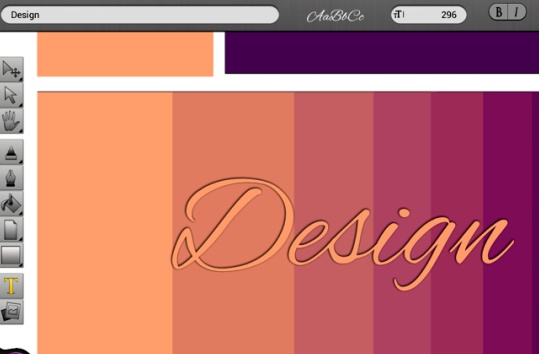
Look at your existing brochures and see if you have made one or more of these common mistakes. Try to avoid them in your next brochure.
Source: Next Level Blog

At a recent networking event in Silicon Valley I was struck by how such events can be really great or really bad. On the great side they can be the beginning of interesting friendships. On the bad side they can be shallow, stressful and unsatisfying.
With SXSW just getting started (I will be speaking there on Essentialism) my editor asked me to share a few thoughts on what attendees at any big, high-profile conference should or should not be doing to have a meaningful experience. Here are three ideas for your consideration:
A Fistful of Business Cards (vs. One Genuine Relationship).
The classic behavior at these events is to exchange a lot of business cards. This remains true even though afterwards many of the cards are close to meaningless. They won't remember you; you won't remember them.
Susan Cain, the genius behind the book Quiet, suggests a different rule of thumb for networking events: "One genuine new relationship is worth a fistful of business cards." This essentialist sentiment is one I fully endorse. In fact a friend of mine, Dave Hanley, recently pointed out to me that the sharing of business cards often signals the end of a conversation not the beginning of one.
Looking Over Someone's Shoulder (vs. Mindful Listening).
I once sat next to Bill Reilly at a networking dinner at Apple. We connected easily and have built a great relationship overtime. I was interested to discover how he learned to really listen to who he is speaking to. He found if he concentrated on listening to other people the way he focused when he meditated his interaction immediately became richer. The other person could feel he was listening, almost physically. And when they knew he was listening they formed a bond with him faster. Life almost immediately felt richer and more meaningful. As professor Graham Bodie has empirically noted, listening is the quintessential positive interpersonal communication behavior.
The Fear of Missing Out (vs. the Joy of Missing Out).
As I mentioned in a recent piece, I was once at the World Economic Forum for Latin America in Mexico with an amazing array of speakers, panels and participants. The bad news was I felt pulled to attend everything and meet everyone. When I was involved in one activity it was easy to think, "Oh, I wonder if I should have gone to that session instead!" The (well-known) term for this sensation is "the fear of missing out" (or FOMO). After two days of this, I was feeling some meeting fatigue. I decided to opt out of the rest of the afternoon and head, instead, for the pool.
One look at the actual pool and you might say, "Well that is just a no-brainer of a decision!" But that is really my point: it wasn't obvious in the moment. I had been so consumed with the fear of missing out I had not stopped to consider what Anil Dash has termed, "the joy of missing out" (or JOMO).
To my surprise and delight I was not the only person who had the idea. I was joined by fifteen or so fellow rebels. Each of us looked at each other with a little chagrin. But the serendipity that followed was amazing. With the space to relax and just talk without an agenda or scheduled "content," magical things happened. Deep relationships were formed, spontaneous ideas flowed and one important initiative was launched.
Our lives at work and at home are full of many invitations to attend this event or that meeting. Not only can the number of these invitations feel overwhelming, the fear of missing out can lead us to be unsatisfied with the choices we make as we wonder about the other half are doing. I sat down with the Huffington Post recently to talk about this.
Source: LinkedIn Post / By: Greg McKeown
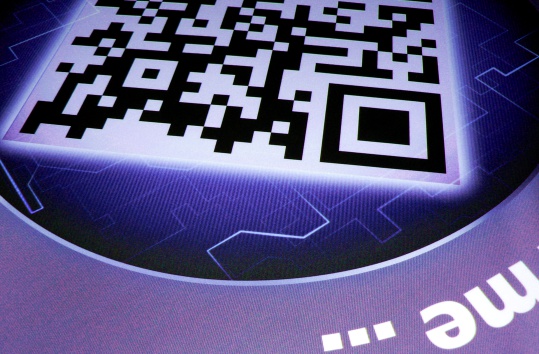
The number of mobile action codes--such as Quick Response (QR) codes, image recognition (IR) and invisible watermarks applied to photographs, brand logos and icons -- appearing in the top 100 circulating U.S. magazines continues to grow dramatically, reports mobile engagement services company, Nellymoser.
The company's annual Mobile Activation Study records instances in which a printed magazine page is capable of being activated by a mobile device, such as a smart phone or tablet. In addition to a steady growth in the mobile activated space, 2013 also saw a rise in the range of technologies used to deliver activations.
Findings:
MOBILE ACTION CODES APPEARING IN MAGS JUMP 55%
Compared to a total of 8,448 mobile activated magazine pages (advertising and editorial content) in 2012, 2013 saw the number of mobile experiences in the top 100 magazines rise to 13,088 -- a 55% growth.
EDITORAL CONTENT TAKES OFF AS A DRIVER OF ACTION CODE USE, ESPECIALLY IMAGE RECOGNITION (IR)
Editorial content mobile activations increased 246% from 2012 to 2013 (from 1,486 in 2012 to 7,972 in 2013). As reported in the study, "This is due primarily to editorial’s embrace of technologies that are unobtrusive to the overall look of the page’s layout— including image recognition (IR) and digital watermarking—in addition to augmented reality (AR) experiences."
IMAGE RECOGNITION (IR) USE SURPASSES QR CODES IN A BIG WAY
The primary activation type overall was Image Recognition (IR), followed by QR—taking second place for the first time in the scope of the study, and watermarking in third.
Image Recognition (IR), which includes Augmented Reality (AR), comprised 6.1% of all triggers in 2012; in 2013, there were 7,916 pages that were activated using the technology, representing 60% of all triggers (advertising and editorial) -- a ten-fold increase. Image-based activations do not require any change in the image itself or the pre-production process, as other mobile action codes do.
Compared to a total of 5,780 in 2012, the number of QR codes deployed in 2013 fell to 3,123 -- marking a reduction from 68% in 2012 to 24% in 2013.
Digital watermarks reached 12% of total market share, an increase from 6% in 2012.
ADVERTISERS REMAIN HEAVY USERS OF QR CODES
Advertisers remain heavy users of QR code campaigns -- the trigger comprised 60% of all advertising activations. The study states, "QR is a common choice for single page ad campaigns as its distinctive appearance makes it highly noticeable, and its long tenure in the market makes it recognizable to the reader. In addition, the likelihood of readers already having an app that scans QR codes on their devices is greater than that of newer technologies, making it a more attractive choice to advertisers."
TYPES OF MAGAZINES DEPLOYING MOBILE ACTIVATION
The most mobile activation represented segments were Fashion & Style (3,893) and Lifestyle & Leisure (3,196) followed by Home & Gardening (855), Home & Cooking (816), Entertainment & TV (750), and Fashion & Beauty (704).
THE USER EXPERIENCE, IMPROVING?
Post-scan experiences (what happens after the reader activates content with their phone) appear to be improving, states Nellymoser, with a focus on providing more value to consumers -- though the majority of scans still take the consumer to a web site landing page.
-----------------------------------------------
About: The list of investigated magazines was selected based on circulation statistics released by the Magazine Publishers Association (MPA) and included monthly, weekly, and biweekly publications. Freely distributed and membership-based publications were excluded. Regional titles, as well as those not readily available on newsstands were also omitted.
Tens of thousands of pages were examined in search of mobile programs or activations, whether triggered by QR code, Microsoft Tag, digital watermarking, image recognition (IR), SMS code, or any other activation triggers. This study not only measures the presence of mobile activation in magazines, but also what it delivers to the reader, how it connects, and what the overall user experience looks like.
Source: Nellymoser, Mobile Activation Study Jan-Dec, 2013, accessed Feb. 19, 2014.

Even after years and years of learning it in school, grammar is just one of the things that many people don't always get right. It's hard. Words and phrases that sound fine in your head or spoken out loud can suddenly look like gibberish when written down -- that is, if you've realized that you made a mistake in the first place.
Realizing that you've made a grammar mistake is half the battle when it comes to defending your content against poor grammar. Lots of times, especially if you're self-editing, it's easy for little grammar mistakes to slip by -- ones that are a letter or two off from the word you need, or just plain usage errors that you're not sure about. These are genuine mistakes -- no one is actually going out and writing these on purpose -- and hopefully your content is largely void of these so it looks polished.
But how do you prevent those grammar mistakes if you're not even aware you're making them? Why, by reading lists posts like this, of course. ;) I'm guilty of these mistakes all the time -- in fact, I pitched this post to my editorial team as "top grammer mistakes" (har har) -- but I've found that reading posts like these helps keep me on my toes when editing my own writing.
So read through the rest of the post and see which mistakes resonate with you the most. Make a mental note to avoid that mistake in the future -- or heck, even bookmark this blog post to remind yourself of them over and over and over again.
Okay folks, here goes nothin'.
1) They're vs. Their vs. There
One's a contraction for "they are" (they're), one refers to something owned by a group (their), and one refers to a place (there). You know the difference between the three -- just make sure you're triple checking that you're using the right ones at the right places at the right times. I find it's helpful to search through my posts (try control + F, or command + F for Mac users) for those words and check that they're being used in the right context before hitting publish.
Correct Usage: They're going to love going there -- I heard their food is the best!
2) Your vs. You're
With these, it's the difference between owning something and actually being something:
You made it around the track in under a minute -- you're fast!
How's your fast going? Are you hungry?
See the difference? "Your" is possessive and "you're" is a contraction of "you are." Again, if you're having trouble keeping them straight, try searching for it through your post while editing to double check your usage.
3) Its vs. It's
This one tends to confuse even the best of writers. "Its" is possessive and "it's" is a contraction of "it is." Lots of people get tripped up because "it's" has an 's after it -- which normally means something is possessive -- but it's actually a contraction. Do a control + F to find this mistake in your writing. It's really hard to catch on your own, but it's a mistake everyone can make.
4) Incomplete Comparisons
This one drives me up a wall when I see it in the wild. Can you see what's wrong with this sentence?
Our car model is faster, better, stronger.
Faster, better, stronger ... than what? What are you comparing your car to? To a horse? A competitor? An older model?
When you're asserting that something should be compared to something else, make sure you are always clarifying what that something else is ... otherwise it's impossible for your readers to judge whether the comparison actually means anything.
5) Passive Voice
If you have a sentence with an object in it -- basically a noun that receives the action -- passive voice can happen to you. Passive happens when the object of a sentence is put in the beginning of a sentence instead of at the end. With passive voice, your writing is perceived as poor writing to your audience.
Hold up. Read that last paragraph I just wrote -- there's waaaaaay too much passive voice. See how it seems kind of jumbly and not quite punchy? Let's try that again.
Passive voice happens when you have a sentence with an object in it -- basically a noun that receives the action -- and that object appears as the subject of the sentence. Normally, the object of the sentence appears at the end, following a verb. Passive writing isn't as clear as active writing -- your readers will thank you for your attention to detail later.
Make sense? It's kind of a complicated thing to describe, but active voice makes your writing seem more alive and clear. Want to get into the nitty-gritty of passive voice? Check out this tip from Grammar Girl.
6) Dangling Modifiers
I love the name of this grammar mistake -- it makes me think of a life or death situation, hanging precariously off a cliff or something equally as a drastic. (Of course grammar mistakes are never that drastic, but it helps me remember to keep them out of my writing.)
This mistake happens when a descriptive phrase is followed by a noun that shouldn't be described by that phrase. It's easier to see in this example taken from my colleague over on the HubSpot Sales blog:
After declining for months, Jean tried a new tactic to increase ROI.
... What exactly is declining for months? Jean? In reality, the sentence was trying to say that the ROI was declining -- not Jean. To fix this problem, try flipping around the sentence structure (though beware of passive voice)!
Jean tried a new tactic to increase ROI after it had been declining for months.
Better, right?
7) Possessive Nouns
Most possessive nouns will have an apostrophe -- but where you put that apostrophe is confusing.
If the noun is plural, add the apostrophe after the s. For example: dogs'.
If the noun is singular and ends in s, you should put the apostrophe after the s. For example: dress'.
If the noun is singular and doesn't end in a s, you'll add the apostrophe before the s. For example: lizard's.
Simple, right?
If a noun is plural and possessive -- which isn't often -- the rules vary.
8) Affect vs. Effect
This one is another one of my pet peeves. Most people confuse them when they're talking about something changing another thing. When you're talking about the change itself -- the noun -- you'll use "effect." For example: That movie had a great effect on me. When you're talking about the act of changing -- the verb -- you'll use "affect." For example: That movie affected me greatly.
9) Me vs. I
Most people understand the difference between the two of these ... until they end up writing a sentence with themselves and another group. Like this sentence, for example:
When you get done with that lab report, can you send it to Bill and I?
Nope, that's wrong. Try taking Bill out of that sentence -- it sounds weird, right? You would never ask someone to send something to "I" when he or she is done. The reason it sounds weird is because "I" is the object of that sentence -- and "I" should not be used in objects. In that situation, you'd use "me." See what I mean?
When you get done with that lab report, can you send it to Bill and me?
Much better.
10) Do’s and Don’ts
I'm not talking about the do's and don'ts of grammar here -- I'm talking about the actual words: "do's" and "don'ts." They look weird, right? That's because of two things: 1) There's an apostrophe in one to make it plural ... which typically isn't done, and 2) the apostrophes aren't put in the same place in both words. It just looks like a mess.
Unfortunately, it's AP Style ... so we just have to live with it. It's a sexy angle for content formats, so I wouldn't shy away from using it, but just remember that the apostrophes should be in different places -- and that's okay.
11) i.e. vs. e.g.
Confession: I never remember this rule, so I have to Google it every single time I want to use it in my writing. I'm hoping by writing about it that the trend will stop.
Lots of people use the terms interchangeably when trying to elaborate on a point, but they really mean two different things. "i.e." roughly means "that is" or "in other words" while "e.g." means "example given" or "for example." See the difference? One's used to clarify something you've said, while the other adds color to a story through an example.
12) Peek vs. peak vs. pique
You know the difference between the three ... right? This is another that I often see people mess up even if they know what they mean. Peek is taking a quick look at something -- like a sneak peek. Peak is a sharp point -- like the peak of a mountain. And pique means to provoke or instigate -- you know, like your interest. If you're going to use one in your marketing, stop and think for a second -- is that the right "peek" you should be using?
13) Who vs. That
This is a tricky one. These two words can be used when you're describing someone or something through a phrase like "Ginny is a blogger who likes ice cream." When you're describing a person, be sure to use "who." When you're describing an object, use "that." For example, you should say "My computer is the one that overheats all the time." It's pretty simple, but definitely something that gets overlooked frequently.
14) Alot vs. A lot vs. Allot
Hate to break it to all of you "alot" fans out there ... but "alot" is not a word. If you're trying to say that someone has a vast number of things, you'd say they have a lot of things. And if you're trying to say that you've set aside a certain amount of money to buy something, you'd say you alloted $20 to spend on gas. If you're trying to remember to stay away from alot, check out this awesome cartoon by Hyperbole and a Half featuring the alot. That face will haunt you for the rest of your content creation days.
15) Into vs. In to
Last but certainly not least is the "into" versus "in to" debate. They're often confused, but "into" indicates movement (Ginny walked into the office) while "in to" is used in lots of situations because the individual words "to" and "in" are frequently used in other parts of a sentence. For example, "to" is often used with infinitive verbs (ex: to drive). Or "in" can be used as part of a verb (ex: call in to a meeting). So if you're trying to decide which to use, ask yourself whether 1) either "in" or "to" fits in with another part of the sentence, or 2) the sentence indicates some sort of movement. If the answers are 1) no, then 2) yes, you should use into.
Source: Hubspot / Written By: Genney Soskey

OK, you are doing all the right stuff for public relations. You are using HARO like a pro. You engage with the right parts of the media just enough, (not too much!), and you are seeing some results in coverage on the mainstream media and on the just-right blogs.
For this article, by the way, we don’t really differentiate between blogs and other legacy media outlets. If you have new people learning about you from outlets that they trust, then it’s all the same yummy PR pie.
But now you want to know:
“Is it helping?”
This is one of the trickiest questions in the marketing world, even more than social media. It’s possible (though tricky) to trace a new prospect to a tweet, or a new contract to a blog post. But with PR, the line is even more murky. You may begin to ask yourself questions like:
Did a mention in a respected industry blog help tip the scales with a reluctant customer?
Did a link from a TV station bump us up in your search rankings, or was it just another Google algorithm change?
Does the TechCrunch logo on our homepage give our site the gravitas it needs to get someone to respond to a Call To Action?
These questions are inherently difficult to answer. So, give up? You just need to know what your goals for your PR are, and then periodically measure -- using the tools on this post or elsewhere -- to see if you are getting the results you are looking for.
Whether you are looking to improve your landing site performance, looking to increase sales, or whether you’re counting people who are downloading a free offer from your site, there are ways to get statistical results about your efforts. Here are a few:
The Bottom Line
Overall, just remember that PR, like blogging, is a good thing to do and an excellent way to keep a long-term view of your success. Advertising with Adwords may get you the traffic you need for as long as you are paying for the service, but a good story in a good outlet will be around for a long time. It’s worth it to put in some effort with that long-term view in mind. Click Here » to review the full article.
Source: Hubspot / By: Scott Yates

There are about 2,150 registered heritage buildings in Vancouver, plus 131 parks and trees, and additional monuments and archaeological sites.
You can find all of these heritage sites in the Vancouver Heritage Register (VHR).
The City's long term goal is to protect, through voluntary designation, as many resources on the Vancouver Heritage Register as possible.
How does a site qualify for inclusion?
To be included in the VHR:
Click Here » to find out more.
Also view Wikipedia » to view listed properties.

A survey examining the attraction and impact of small business store signage on the consumer -- and its impact on their intent to visit a store, make a purchase and more -- finds a solid connection between good signs and positive consumer action.
The survey, commissioned by FedEx Office, a small business marketing solutions firm, in conjunction with Ketchum Global Research & Analytics, finds:
About: FedEx Office, in conjunction with Ketchum Global Research & Analytics, worked with ORC International to conduct a telephone omnibus survey of 1,000 Americans aged 18 years and older. A small business owner screener question resulted in an end sample of 914 respondents; the margin of error is +/-3.1 percent.
Source: Print in the Mix
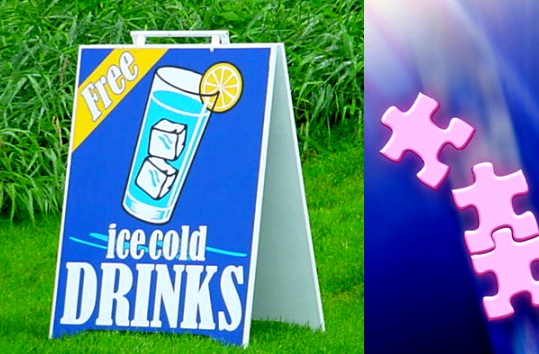
People are overwhelmed with the sheer amount of branded information and advertising that bombards their lives every day. The number of messages easily runs into hundreds per day, leading people to filter out as much of it as possible. Online advertisement; can be blocked with software or by opting out, television by watching recorded shows, Netflix, iTunes and the growing list of no ad options, and radio by listening to subscription music-only channels. But outdoor advertising, such as billboards, and sidewalk signs cannot be turned off. They work twenty-four-seven.
...
The Best Platform for Small Business
It is therefore one of the best platforms for advertisers and marketers, especially for small business. As the costs for electronic media escalate, out-of-home advertising remains very affordable; without sacrificing the advertisements quality and impact. When advertisers, marketers, and advertising agencies compare the cost and reach of different types of media, outdoor advertising really stands out. The average cost to reach a thousand consumers with outdoor advertising is about $1.59 which is 80 percent less than television, 60 percent less than newspapers, and half the cost of radio. It stands to reason out-of-home (OOH) advertising is now one of the fastest growing ad mediums behind online. With recent data from the Outdoor Advertising Association of America confirming a long-term trend of 5 per cent compounded revenue growth for the medium, in quarter one of 2013.
Cost, however, is just one of the attractions of outdoor printed media advertising. Strategic placement of advertisements will further enhance its effectiveness to target and persuade potential consumers. An advertisement near the point-of-sale can obviously serve as a last minute purchase reminder to consumers and potential consumers. Out-of-home advertising can also complement other media to make advertisements and campaigns more effective.
Of course, a wide range of audience in outdoor advertising is no guarantee that a business or a company's sales will soar. The most critical success factor is the message itself. It has to make an impact and make it fast. For example, on billboards, the consumer might be going by at 60 miles per hour so it is incredibly important that consumers be able to immediately comprehend the message.
Another great advantage of out-of-home advertising is that advertisers can familiarize people with the packaging of a product. It is a very good vehicle for emphasizing what the product looks like so consumers will be able to recognize it immediately when they go to the store. It is also especially useful for helping launch a new and unfamiliar product and is a good value for businesses with limited marketing funds.
...
Outdoor Advertising has Variety
Outdoor advertising can take several forms, though most are of the sign variety. The following outdoor options are most common:
Billboards... Traditionally, these were large sign structures on which sheets of paper were adhered. Today, paper has been replaced by plastic and vinyl, yet the essence of the medium remains unchanged. They are usually placed along highways and other high traffic areas.
Sidewalk Signs... These are designed to stand freely on sidewalks. Often they are used to promote retail specials in shopping areas or used as directional signs. For more casual environments, chalkboard type signs can be used which can be easily changed and updated.
Buildings and Grounds... Building owners and tenants use signs, frequently lighted, as branding for their company. In retail and restaurant locations, outdoor equipment such as patio umbrellas can also display the business’ brand name.
Promotional Flags and Banners... Flags and banners promoting a business can be placed along entryways or high traffic areas to gain attention for your business. While traditionally flown flags can be used, flexible flags are becoming increasingly popular with small businesses. These can be made of cloth (like traditional flags), vinyl or a polyester fabric.
Inflatables... Giant inflatable animals, characters, products and structures (such as entryways) can be purchased or rented, and can be very effective in gaining attention for special events and promotions.
Trucks and Vehicles... They are moving billboards. With expanded graphic capabilities such as vehicle wraps, trucks and cars bring a business’ brand and message to places where signs are often banned.
The key to it all is quite simple; make it fun and surprising, you'll be sure to attract some attention and new customers too.
Source: DisplayBay & AllAbout4
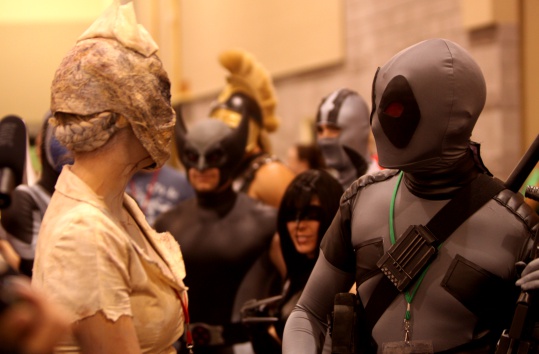
Did you know that Garth Brooks sang a song about the importance of networking?
Well, pretty much. Here's the scoop: Brooks left a relationship that wasn’t fruitful anymore, but because he has contacts all over the place, he knows he’ll be able to bounce back. And while Garth might be going through a rough breakup, he hit on a principle that we as professionals abide by: It’s all about who you know.
Our contacts help us get jobs, mentor us, and provide us with a sounding board for professional questions. But before that person ends up as a trusted connection, you have to cultivate a mutually-beneficial relationship, one that provides value to your professional life in some way or another. You know what I’m talking about, people: Networking.
If you cringed a bit at that word, it’s okay. For a lot of people, especially introverts, the thought of networking with complete strangers is about as awkward as it gets. The entire platform of networking has largely moved out of our local coffee shops and onto online sites like LinkedIn, taking the need to be physically present to cultivate relationships out of the equation. Unfortunately, that’s left some of the professional world feeling more comfortable interacting with people online than in person. But it’s important to be able to network both ways, so that you can get the most out of being in the workplace, going to industry events, and generally being able to have real-life professional conversations. There’s just something about that face-to-face conversation that can’t be replaced by a keyboard and a mouse.
So, that’s why we came up with these 3 brilliant icebreakers for in-person networking that you can use anywhere -- at work, at a conference, out to lunch with colleagues -- to really hone on in the core skills of networking. Keep these icebreakers in your back pocket for your future networking events.
The Networking Trifecta of Icebreakers
#1. “Oh, you’re from [X Company]? How did you end up there?”
No matter how good or bad you think you are at networking, you really can’t mess up with this question. At the surface, it’s a pretty standard question when getting to know someone. It’s a question the other person has undoubtedly answered before, so it won’t catch them off-guard. But for you, it’s a chance to practice a skill that many want, few have, and even fewer do well: Listening.
You know when you’re telling a story and the other person seems really into it? They’re nodding at the appropriate times, probably giving you a few “oh yeah!'s” and “really?'s”? That’s because this person is giving you their undivided attention, and it makes you feel good, maybe even really confident about whatever you’re talking about. This is what you should aim to do with every professional conversation you have. One tip from Ivan Misner, the founder and chairman of business networking organization BNI, suggests that focusing on maintaining eye contact with the person you’re interacting with will help you listen better and drown out other distractions around you. If you’re networking at a big event, you’ll need to really be able to focus to practice listening.
#2. “You know, I recently read that [insert relevant industry news here]. Have you heard about that?”
Think about your favorite blog. Maybe you read it every day, or once a week, or maybe only once a month. No matter how frequently you read it, the point is that you keep coming back to that same blog instead of choosing a similar one with the same topic. And why wouldn't you? It's your favorite. And whether you know it or not, one of the reasons it’s your go-to source on whatever the topic is because it provides value to you in some way.
If you want people to think of you, remember you, really connect with you on a personal level -- you have to provide them with some value. And there’s nothing more valuable these days than the exchange of information. If you want to be perceived as an expert in your field, you need to contribute something of value to the conversations going on in your field.
You can practice doing this in a safe place -- your workplace. Find those people you really want to make a connection with and strike up a conversation in the kitchen about the latest and greatest article you’ve read.
(Tip for HubSpot customers: It’s really easy to stay on top of industry news if you’re using Social Inbox. You can create streams of any keyword that’s relevant to your industry, or monitor a Twitter list of thought leaders.)
#3. “Hey, I’d love your opinion on [your latest project]. Do you have a minute?”
“Oh, you would?” At least, that's what I think when someone asks me for help with something that’s important to them. It makes me feel appreciated, respected, and knowledgeable. Clearly I’ve devoted some time to whatever topic they're asking me about, so it feels good to put what I know to good use.
Now that you know that, pretend you’re the person who's looking to make a connection with me. Why would you hesitate to ask my opinion or for my help on something if you know it makes me feel this way? There's no reason to. So, don't.
In the Inc.com article "Networking Tips: Go From Awkward to Awesome," author Patricia Fletcher explains that asking for someone’s advice about a topic they know well is a great way to get a conversation started and bonds formed. “It’s pretty cool,” she says, “to have your ask turn into a successful person’s thoughtful input on what they would do if they were in your shoes.” Take advantage of these successful people around you, either the ones you work with every day or thought leaders in your industry, by tapping into their knowledge and asking for help.
Don't Hesitate. Just Network.
So the next time you’re faced with the opportunity to network in-person, don’t shy away. If you can remember the networking trifecta -- listening, providing value, and asking for help -- you’ll make those uber-important trusted connections that will serve you well in your professional years to come.
And, once you've done it a few times, it'll feel more and more natural until you find yourself doing this without thinking about it. You'll be surprised how easy networking can be with a little strategy and the right tools. Because you know what? You never know when you’ll need to pull a Garth Brooks and call on some trusted connections for a little help.
Source: Hubspot / Maggie Hibma